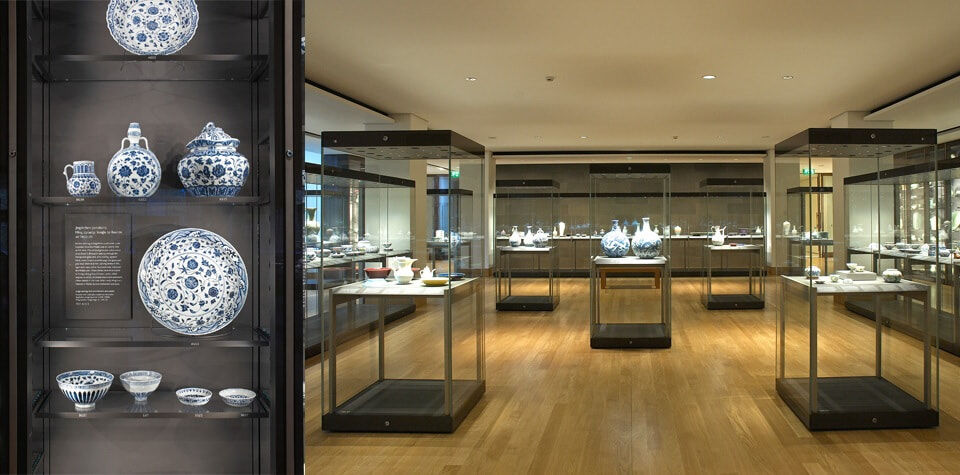A ROMANCE OF COLLECTING: THE PERCIVAL DAVID CHINESE PORCELAIN COLLECTION

A ROMANCE OF COLLECTING: THE PERCIVAL DAVID CHINESE PORCELAIN COLLECTION
By Christine Bell
A visit to the British Museum in London is a necessity for the tourist in search of culture in its widest sense.
Should the visitor tire of Egyptian mummies, very large and somewhat threatening stone sculptures, or even the Elgin Marbles, a visit to the third floor of the Museum is highly recommended. In the spaces once occupied by the Museum’s music collections – now transferred to the British Library – you will find the splendid Chinese porcelain collection assembled by Sir Percival David (1892-1964).
Despite his very English sounding name, David was a born in and very much of the East. He was born in Bombay into a Baghdad Jewish family, educated at the prestigious Elphinstone College and then the University of Bombay. Branches of the Sassoon family had branches in London, Shanghai and Hong Kong, and David eventually became chairman of the company.
Unfortunately, David did not write anything about the formation of the collection, the nucleus of which is 70 pieces, 20 of which are inscribed with poems of the Qianlong Emperor (1735-1796) (Emperor Chi’en Lung Wade-Giles transliteration). The end of the Qing dynasty (1644 to 1912) (i.e. Manchu led dynasty) in 1912 led to political unrest across China, controlled in the North by warlords, followed by a split between the Chinese Communist Party (founded 1921) and the Kuomintang. Nankin, Shanghai and then Beijing fell to the Nationalists in 1927, the year that David went to China on business. The forbidden city was opened up, as were its collections, and David just happened to be in the right place at the right time.
He was able to make the authorities make better displays of the collections, and paid for the re-furbishing of one of the pavilions. Civil wars and a buoyant economy are not often found together, and the government was short of foreign cash. With his family fortune located in foreign countries, foreign exchange was available, and Wall Street did not collapse until 1929. David was able to purchase his 70 pieces of Imperial porcelain.
It’s important to stress that this was a purchase suitable for both parties, and while it is unfortunate that the remaining collections were taken to Taiwan in 1947, there has been little controversy about the proceedings, except by the vision of hindsight. In 1930 this was the major private collection of Chinese porcelain in Europe. Few people were aware of it, although a catalogue had been drawn up and published in 1934. The International Exhibition of Chinese Art at the Royal Academy in 1935-6: brought to the public gaze those objects which the Chinese themselves prized, and David underwrote the exhibition financially. Prior to this, the English taste in the decorative arts for Chinoiserie, of which the most exotic in English eyes was the Brighton Pavilion, that mind-boggling combination of Indo-Chinese beloved by ‘Prinny’, later George IV.
This article was originally published in fairhall, issue 24, July 2018, pp 11.
Journals
About US
Explore
Contact
VISIT
See our VISIT page for hours and directions
BY PHONE
+61 3 9416 2515
BY POST
PO Box 79, East Melbourne VIC 8002
ONLINE
General enquiries
Membership enquiries
Shop
Donation enquiries
Subscribe to E-Newsletter



